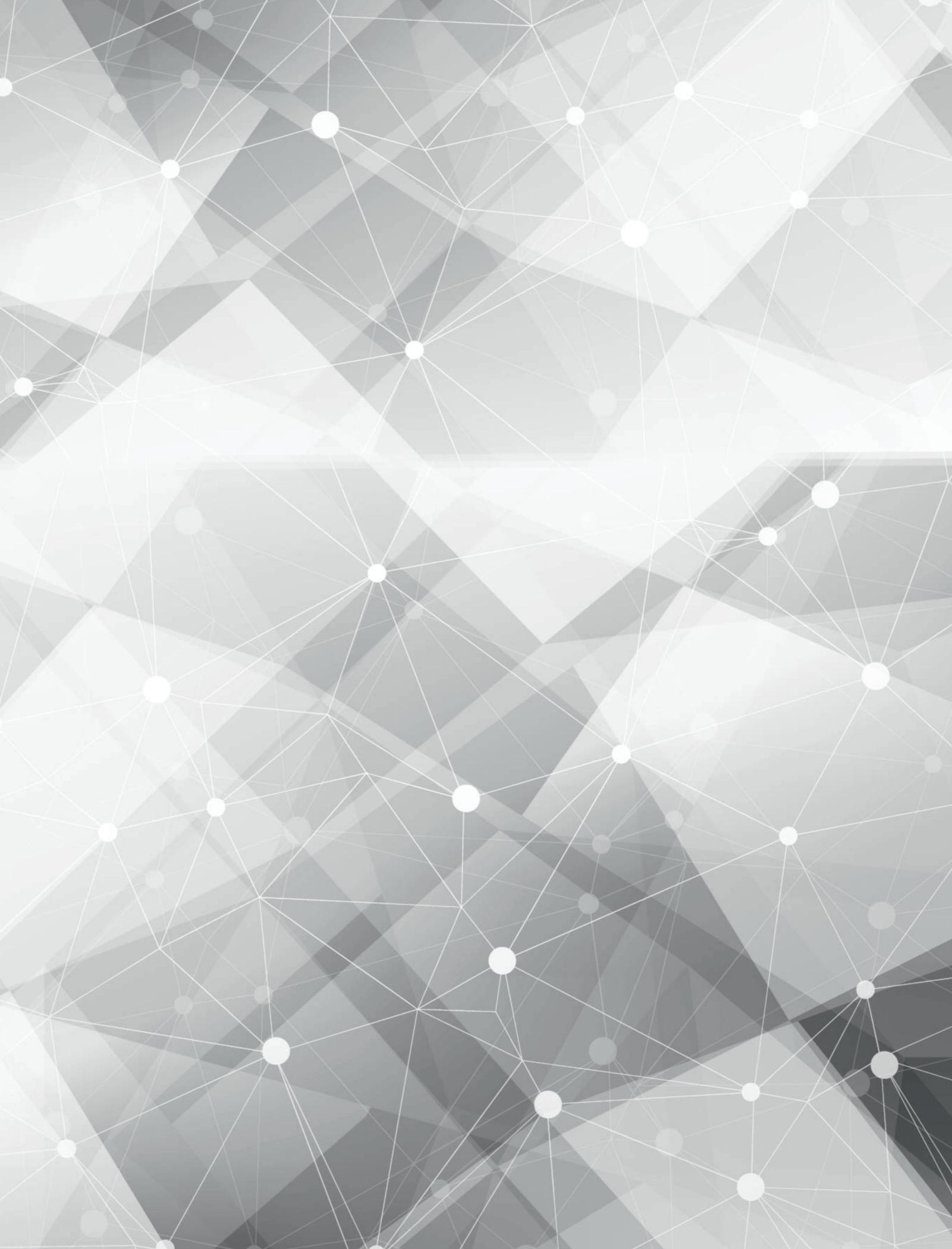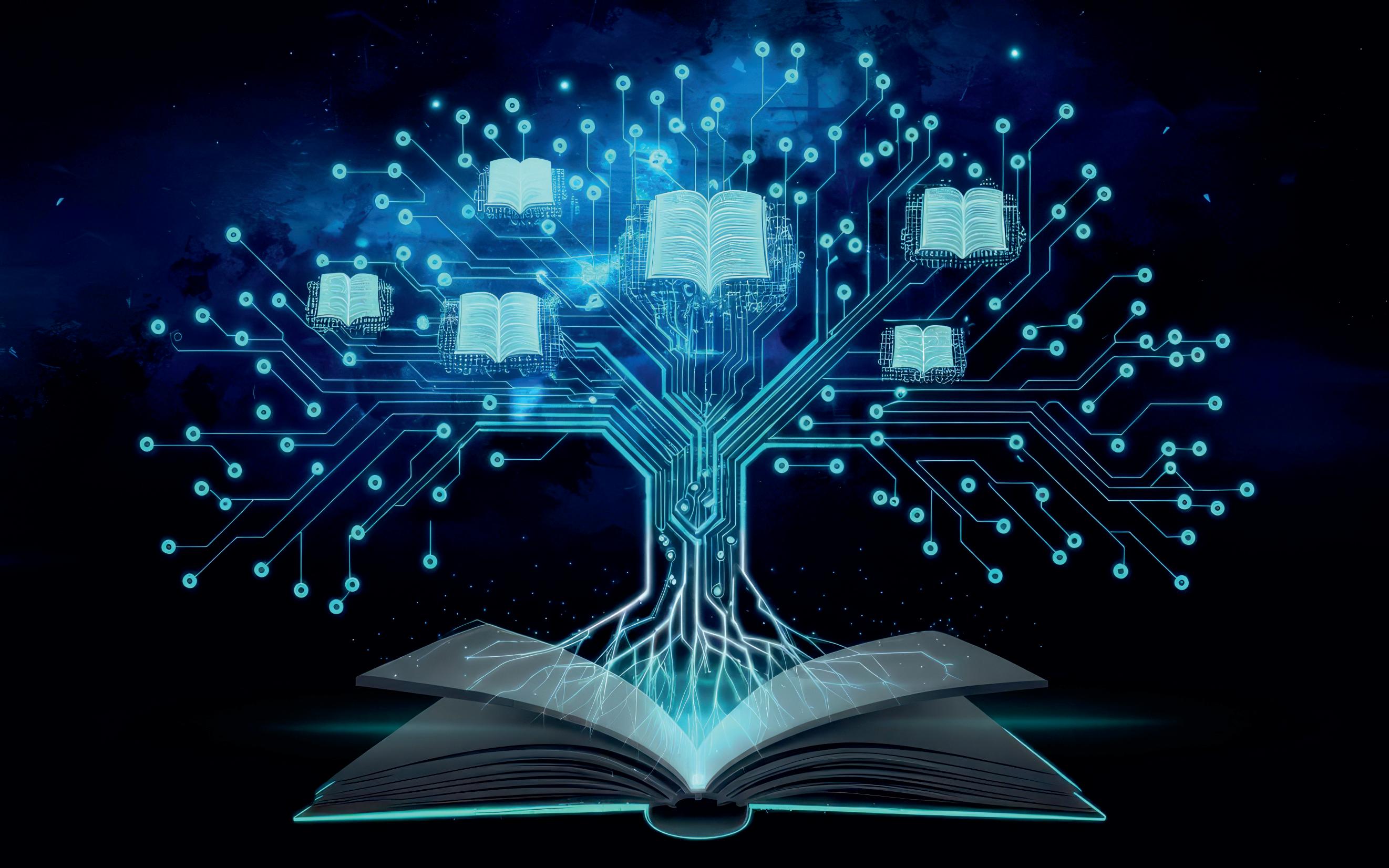












omethinkerswritetoinform.Otherswritetoinspire.Butararefew,likeRichard
Larson,writetoshapethewayweseetheworld—andmoreimportantly,howwe choosetochangeit.
Thisfeatureshinesalightonanextraordinaryfigurewhoseworktranscendsdisciplines, borders,andgenerations.RichardLarsonisnotjustanauthor.Heisabuilderofideas,a challengerofnorms,andapioneerofsystemsthinkingwhosewordshaveignitedminds acrossclassrooms,boardrooms,andcommunities.
Hisbrillianceliesnotincomplexityforcomplexity’ssake,butinhisabilitytotranslate deeplytechnicalconceptsintotoolsoftransformation.Whetherhe’swritingoneducation reform,publicsystems,ortheroleoftechnologyinhumanadvancement,Larsonhasan uncannyabilitytoconnectdatatohumanity,policytopeople,andinnovationtoimpact.
Hisvoiceisthoughtfulyetbold.Measured,yetuncompromising.Eachpagehecraftsis infusedwiththeurgencyofsomeonewhounderstandswhat’satstake—andtheoptimism ofsomeonewhobelieveswecanstillgetitright.Througheveryessay,study,orpolicy recommendation,hechallengestheinertiaofoutdatedsystemsandcallsforafuturethat ismoreequitable,intelligent,andinterconnected.
WhatmakesLarson’swritingtrulypowerfulisnotjusthisauthority—buthisauthenticity. Hewriteswithadeepsenseofresponsibility,informedbydecadesofhands-on experienceinacademia,publicservice,andappliedresearch.Hisworkdoesn’tsitidleon shelves;itmovesdecision-makers,informsstudents,andequipsfutureleaders.
InhonoringRichardLarsoninthisedition,wecelebratemorethanaliteraryvoice—we honorathoughtarchitectofthemodernage.Amanwhohasmadeithismissiontothink rigorously,actethically,andwritepurposefully.
Thisisn’tjustastoryofabrilliantAmericanauthor.It’sthestoryofamindshapinganew world—quietly,intelligently,andrelentlessly
How Richard Larson Redened Education Through Passion, Research, and Mentorship 18. 22.
The Narrative of Tomorrow Exploring the Digital Education Evolution
The Art of Analytics Operational Research Trends in a Changing World
Editor-in-Chief
Deputy Editor
Managing Editor
Assistant Editor
Visualizer
Art & Design Head
Art & Design Assitant
Business Development Manager
Business Development Executives
Technical Head
Assitant Technical Head
Digital Marketing Manager
Research Analyst
Circulation Manager
Thanh Truong
Sam Carter
Alaya Brown
Maria Evans
Chris Carter
Millie Simon
Judy Smith
Phoebe Jacob
Aisha, Olivia
David Walker
Mia Rodricks
Helena Smith
Eric Smith
Richard Martinez


Follow us on www.facebook.com/thecioworld We are also available on RNI No.: MAHENG/2018/75953 www.x.com/thecioworld

Copyright © 2025 The CIO World, All rights reserved. The content and images used in this magazine should not be reproduced or transmitted in any form or by any means, electronic, mechanical, photocopying, recording or otherwise, without prior permission from The CIO World. Reprint rights remain solely with The CIO World.
































Education is no longer confined to the traditional chalk-and-talk model. It is undergoing a profound transformation one propelled by digita technologies,evolvinglearnerexpectations,andglobalsocioeconomic shifts. From virtual classrooms and AI tutors to blockchain-based credentialing and immersive simulations, thelandscapeisbeingrewritteninrealtime.Thisisnotjust technological revolution; it’s a philosophical one, reshaping how we define learning, access knowledge, and measure growth.
Thedigitalrevolutionineducationhasallowedaseismicshift from standardized curricula to personalized learning journeys. Artificial intelligence and adaptive learning platforms are now able to understand the unique learning patterns, pace, and preferences of individual students. Tools like Khan Academy, Duolingo, and Coursera analyze user behaviortotailorlessonsaccordingly—transformingpassive learners into active participants in their own educational development This personalization is especially vital in addressing learning gaps, supporting neurodiverse students, andenhancingretention.
When the COVID-19 pandemic forced the world to go remote, it accelerated the adoption of digital platforms in educationbyadecade.Whatbeganasareactivemeasurehas since evolved into a more intentional integration of hybrid learning models. Virtual classrooms once viewed as secondary to in-person instruction—are now foundational.


Institutions have realized that learning can transcend geography,andstudentscanengagewithglobalperspectives from their own homes. This democratization of access is creating a more inclusive educational ecosystem, offering opportunities to those previously excluded due to location, disability,orsocio-economicstatus.
Gamification,onceconsideredafringeidea,isnowcentralto engaging the digitally native generation Leaderboards, badges, and narrative-based learning modules inject motivation into the learning process Beyond that, technologies like virtual reality (VR) and augmented reality (AR) are revolutionizing the classroom by creating experientiallearningenvironments.Imagineahistorystudent walking through ancient Rome in VR or a biology student manipulating DNA strands in AR these immersive experiences not only enhance understanding but ignite curiosity
Inthisnewera,educatorsarenolongermeretransmittersof content—they are designers of learning experiences. With access to analytics, learning management systems (LMS), and digital collaboration tools, teachers can dynamically adaptlessonstorespondtostudentneedsinrealtime.Therole of a teacher now extends beyond instruction to include data interpretation, digital literacy mentoring, and socialemotional guidance. Professional development must evolve tosupportthismulti-dimensionalrole,ensuringeducatorsare equipped not just with tools, but with transformative mindsets.
CredentialingandAssessment:Reinvented
Digital transformation is not just about how students learn—it’s about how they are assessed and credentialed. Blockchaintechnologyisenablingverifiabledigitaldiplomas andmicro-credentials,shiftingtheemphasisfromdegreesto demonstrable skills. As industries place greater value on capabilities over credentials, educational institutions are rethinkingassessmentmetricstobetteralignwithreal-world outcomes.Continuousassessmentmodelsandproject-based learning are replacing high-stakes exams, offering a more nuancedpictureofstudentgrowth.
While digital education promises access, it also risks deepeningexistinginequalities.Noteverylearnerhasaccess to high-speed internet, reliable devices, or quiet learning spaces. These disparities must be addressed through policy interventions, public-private partnerships, and communityledsolutions.Furthermore,theuseofAIanddataineducation raises ethical questions around privacy, surveillance, and algorithmicbias.Aswedigitizelearning,wemusthumanize it—ensuring that inclusivity, equity, and empathy remain at theheartofinnovation.
Digital education is erasing borders. Students can now collaborate on projects with peers across the world, attend guestlecturesfrominternationalthoughtleaders,andengage with diverse cultural perspectives This global interconnectedness prepares learners for a future workforce thatisinherentlycross-culturalandremote.Itfostersnotjust knowledge acquisition but also global citizenship—a vital traitinnavigatingthecomplexitiesofthe21stcentury
Themostprofoundshiftbroughtaboutbydigitaleducationis themovefromafiniteacademictimelinetoalifelonglearning model.Inanerawhereindustriesevolvefasterthancurricula, continuous upskilling and reskilling are becoming nonnegotiable. Digital platforms are making education “liquid”—accessibleondemand,acrossdevices,andinbitesized formats that align with busy lives. Whether it’s a workingparentlearningdataanalyticsatmidnightoraretiree exploring philosophy through a MOOC, the boundaries of whenandhowwelearnaredissolving.
The digital education evolution is not about replacing teachers with technology—it’s about empowering them. It’s not about abandoning classrooms but expanding them.And it’s not about technocentrism, but learner-centricity As we stepintothisnarrativeoftomorrow,wemustrememberthat thecorepurposeofeducationremainsunchanged:tocultivate curiousminds,compassionatehearts,andcapablehands.The tools may evolve, but the mission remains eternal. The classroomofthefutureishere—notasadestination,butasan ever-evolvingjourney.





OperationalResearch(OR),onceconfinedtomilitary logisticsandindustrialoptimization,hasundergone aprofoundtransformationinrecentyears.Inaworld marked by volatility, uncertainty, complexity, and ambiguity—commonly referred to as VUCA—traditional models of decision-making are increasingly inadequate. Today’s challenges demand a reimagined approach to OR, one that embraces complexity, harnesses real-time data, and infusesethicalconsiderationsintoeveryalgorithm.Whatwas once a back-office tool has now emerged as a front-line discipline guiding the most critical decisions in business, governance,healthcare,supplychains,andsustainability
The modern OR landscape is defined by the convergence of analytics and artificial intelligence. While machine learning algorithms offer incredible speed and pattern recognition, they lack the nuanced judgment that seasoned decisionmakersbringtothetable.ThemosteffectiveORframeworks today do not seek to replace human input but to enhance it. This synergy enables organizations to ask better questions, testmultiplescenarios,andsimulateoutcomeswithprecision.
For example, predictive models in OR can now be fed with live data streams from IoT sensors, enabling real-time insights into logistics, energy usage, or equipment health. These insights, when interpreted through a human lens, can result in smarter scheduling, improved resource allocation,
and even predictive interventions that prevent crises before theyunfold.
Asignificant trend in the OR field is the democratization of analytics.OncethedomainofPhDsandspecializedanalysts, OR tools are becoming increasingly accessible to nontechnical stakeholders. Thanks to no-code and low-code platforms, frontline managers and policy professionals can now interact with complex models through intuitive dashboards.Theresultisabroader,moreinclusiveapproach to decision-making one that incorporates diverse viewpointsandalignsbetterwithon-the-groundrealities.
Thisdemocratizationisvitalinaworldwheredecisionsmust be made swiftly, collaboratively, and across diverse geographies From municipal planning to agricultural management,decision-makersnolongerhavetowaitweeks forinsights—theycanmodelscenariosontheflyandcoursecorrectinrealtime.
As analytics influence more of our societal systems—policing, hiring, credit scoring, and even school admissions OR professionals must confront ethical questions with greater urgency It is no longer sufficient to optimize for efficiency or profit alone. What’s best for the spreadsheetmaynotalwaysalignwithwhat’sfairforsociety.


Thus,ethicaloperationalresearchisemergingasadiscipline of its own. This trend involves building transparency into algorithms, auditing biases in data, and ensuring that optimizationmodelsreflectsocietalvalues,notjustbusiness metrics.InstitutionsliketheINFORMSEthicsCommitteeare increasingly promoting frameworks for responsible modeling.Thisisnotjustamatterofreputation—itisanew imperativefortrustandlong-termviability.
Traditional OR has long focused on cost minimization and throughput maximization. But today’s world demands more nuancedgoals.Amidclimatechange,geopoliticalinstability, and pandemics, resilience and sustainability are becoming primaryobjectives.
Operational researchers are now modeling for carbon footprints, supply chain vulnerabilities, disaster preparedness, and circular economy practices. This shift requiresembracingmulti-objectiveoptimization—balancing cost,speed,risk,andenvironmentalimpactsimultaneously It also demands that OR practitioners think long-term, evaluating not just immediate outcomes, but how systems performunderstress,overtime.
Theshifttowardresilientsystemsdesignisespeciallyevident in sectors like healthcare, where capacity planning now incorporatespandemicscenarios,oringlobalsupplychains, where backup sourcing and localization strategies are modeledalongsidecostefficiency.
Oneofthemostsignificantchangesinoperationalresearchis the move toward real-time, adaptive analytics. Classical OR wasoftenretrospectiveorbatch-based—analyzinghistorical data to suggest future improvements. But today, industries operateinliveenvironments,whereconditionsshifthourlyor evenbytheminute.
In response, OR models are becoming adaptive. Machine learning techniques are being layered into optimization frameworks,allowingthemto"learn"fromnewdataandselfadjustwithouthumanintervention.Thisisparticularlycrucial in industries like financial services, where fraud patterns evolve constantly, or in energy grids, where demand spikes mustbemanagedinstantly.
These real-time systems offer not just insight, but agility—a quality that can determine success or failure in today’s fastmovingmarkets.
Modern OR doesn’t operate in a silo. It draws from—and contributes to—fields as diverse as behavioral economics, systems engineering, computer science, logistics, and even psychology. This cross-disciplinary approach is reshaping howproblemsareframedandsolved.
Forinstance,understandinghumanbehaviorisnowakeypart ofoperationalmodels.Howdopeoplerespondtoincentives? What psychological bottlenecks slow down processes? Behavioral OR addresses these questions by incorporating human tendencies into simulations, making models more realisticandactionable.
In parallel, systems thinking has gained prominence. Rather than optimizing components in isolation, OR professionals are now modeling entire ecosystems—from smart cities to globalfinancialflows.Thissystemicviewhelpsavoidthetrap of local optima and paves the way for holistic, sustainable solutions.
Asoperationalresearchcontinuestoevolve,itsvaluewilllie not just in technical prowess, but in its ability to illuminate pathways through complexity. It is as much an art as it is a science—requiring curiosity, creativity, ethics, and empathy inadditiontoalgorithmsandequations.
In a changing world, the core promise of OR remains constant:tohelppeoplemakebetterdecisionswiththetools of logic, data, and foresight. But the ways in which that promise is fulfilled are more dynamic than ever. As we navigatenewtechnologicalfrontiersandsocietalchallenges, operationalresearchwillservenotjustasadecisionaid—but asamoralcompassandstrategiccatalystforamoreinformed, agile,andequitableworld.


